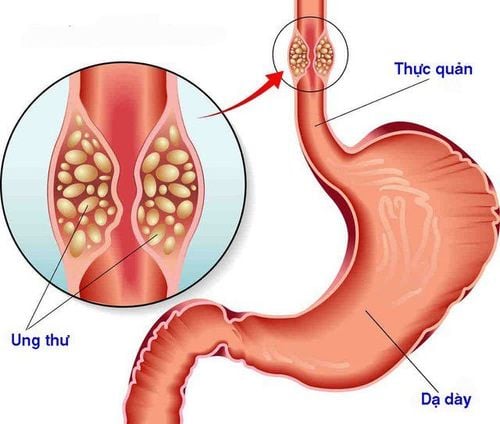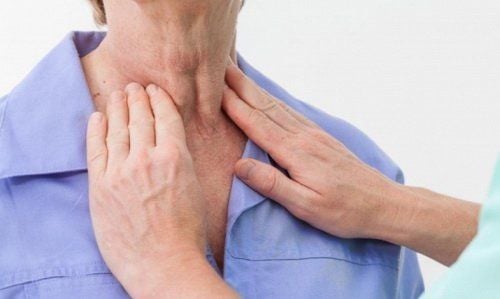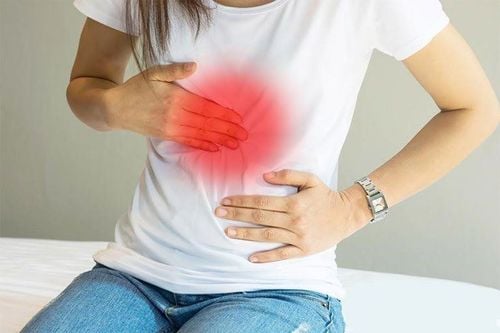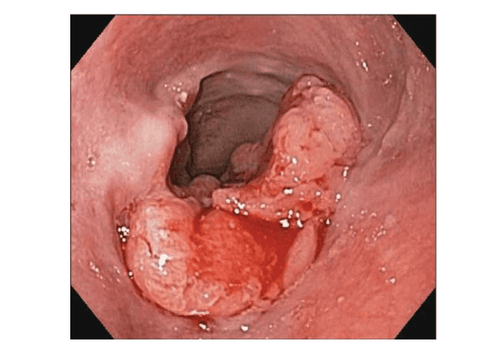This is an automatically translated article.
The article was professionally consulted by MSc Vu Van Quan - Department of General Surgery & Anesthesia, Vinmec Hai Phong International General Hospital. The doctor has more than 10 years of experience working in the field of General Gastroenterology.Esophageal reconstruction by non-thoracotomy is a safe and effective treatment for esophageal cancer today. However, esophagectomy and esophagectomy by transthoracic endoscopic method still have some complications during the procedure that patients need to be aware of.
1. How to cure esophageal cancer
Esophageal cancer is the overproduction of cells in the esophagus, the part of the digestive tract that runs from the middle of the throat to the esophagus and stomach. Clinical manifestations of esophageal cancer are difficulty swallowing, weight loss. This is one of the most common cancer diseases in the world and in Vietnam with the rate of men infected about 3 times more than women. In addition, in the late stage, esophageal cancer also has more obvious manifestations such as dull pain behind the sternum, shortness of breath, hoarseness, dry cough, sputum production, epigastric pain, nausea, hiccups, fatigue. fatigue, pallor, subcutaneous emphysema, pneumonia, lung abscess... when the esophageal tumor has compressed the nearby organs.Some methods that can be applied to treat esophageal cancer are chemotherapy for esophageal cancer, radiation therapy for esophageal cancer, and esophageal surgery. In the past, the esophagectomy method was often performed with a very long incision, measuring 35 to 37 cm and possibly requiring resection of the patient's entire esophagus. This surgical method often causes patients to lose a lot of blood, which can easily cause life-threatening complications because the esophageal region is quite close to the location of circulatory and respiratory organs such as the heart and lungs. When using esophagectomy with small intestine, it will be difficult to connect small blood vessels, the surgery will have to be prolonged, causing the risk of necrosis of the microvessels because of the lack of blood supply. .
Some other treatment methods such as endoscopic esophagectomy and lymph node dissection. This method is suitable for patients with esophageal cancer that is detected at a late stage, patients are conducted laparoscopic surgery to treat with less bleeding complications as well as treatment and recovery time. of the patient will be shortened. Laparoscopic surgery allows the esophagus to be reconstructed with the patient's own stomach, helping to create the equivalent of the removed esophagus and the recovery time is also very quick. However, certain advantages of colonic esophagectomy cannot be ruled out. This is an effective and traditional method of treating esophageal cancer, although there are still some limitations, but today, colonoscopy has been further supported by thoracoscopy to limit unwanted complications.

2. Reconstruction of esophagus with colon
Colonic esophagectomy is carried out in the following steps:Open the abdomen in the midline above the navel. Take the transverse colon with pedicle, open the esophagus, specifically opening the esophageal slit, cut the esophagus through the opening slit. Place a thoracoscope. Create a retropleural tunnel through the site of the esophagus by way of the neck along with the esophageal slit. Connects the lower end of the transverse colon to the abdominal esophagus adjacent to the cardia. Pass the esophagus through the tunnel to the esophageal neck. Stitch the large gastric aneurysm with the shaped esophagus to prevent gastroesophageal reflux in patients Because the method of esophagogastroplasty by colonic esophagectomy can cause some complications such as pleural tear, pedicle injury. Therefore, thanks to modern science and technology, this method has now been supported by thoracoscopy to limit these complications.
Colonic esophagectomy has many advantages over small bowel esophagectomy because the colon has some more suitable features such as the size of the colon is almost equal to that of the esophagus, so when creating Esophageal imaging will not cause mediastinal visceral compression as well as the patient's stomach will be kept in place after the surgery is completed, without affecting the functioning of the stomach as well as the digestive system. patient's digestion.
In addition, when reconstructing the esophagus with the colon will not cause compression on the heart, lungs, large blood vessels like oesophageal reconstruction through the retrosternal line because for children, the development of the thorax does not is suitable for the colon, so when performing esophagectomy with the retrosternal route, it may cause deformity. An important step forward of this method is thoracoscopy, this technique has helped make the tunneling in esophagoplasty performed scientifically, with observation through thoracoscopy rather than thoracoscopy. not as efficient as before. Thanks to that, complications such as pleural tear, bronchial damage are eliminated when performing esophagectomy.

Recommended video:
Cancer screening: Methods for early detection of disease, reducing treatment costs and cancer mortality
Please dial HOTLINE for more information or register for an appointment HERE. Download MyVinmec app to make appointments faster and to manage your bookings easily.














